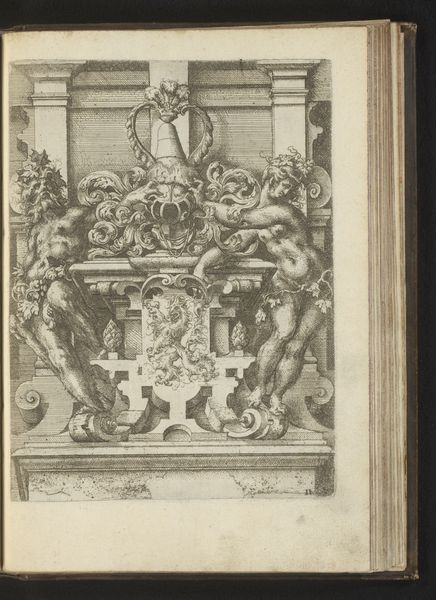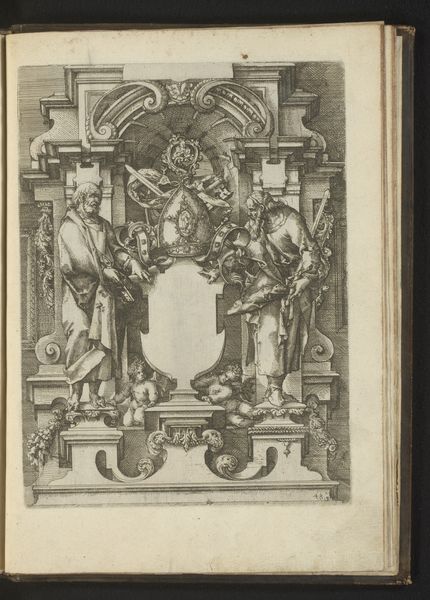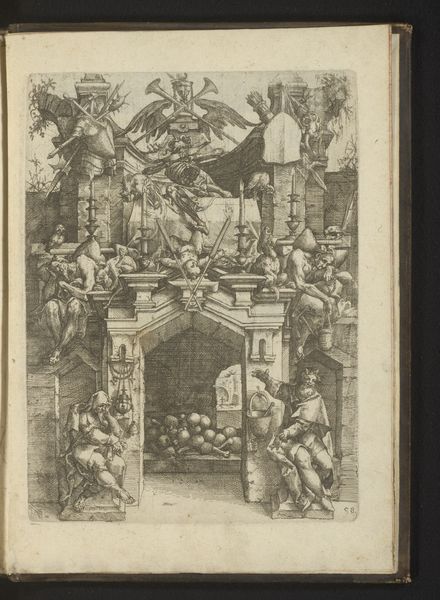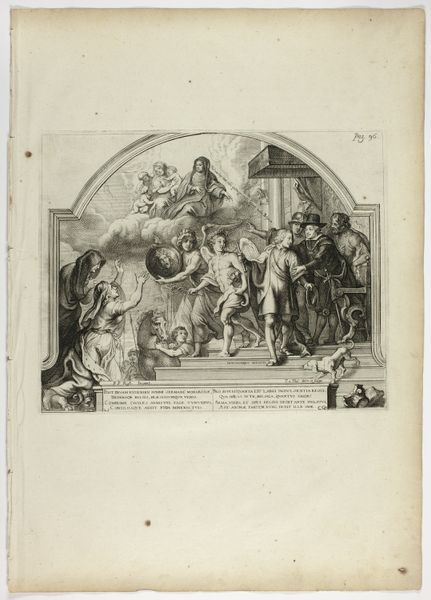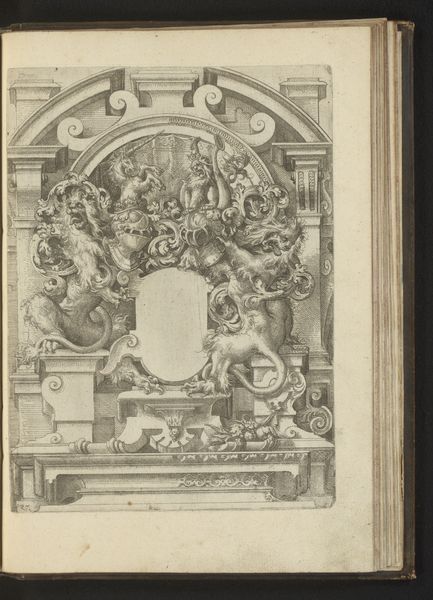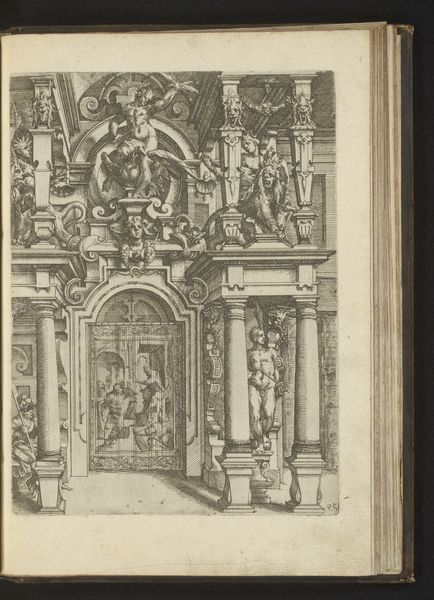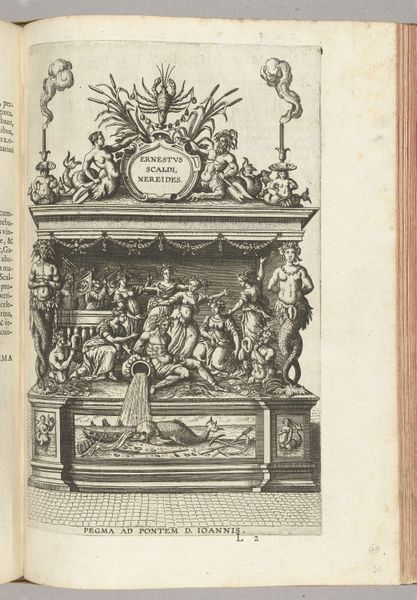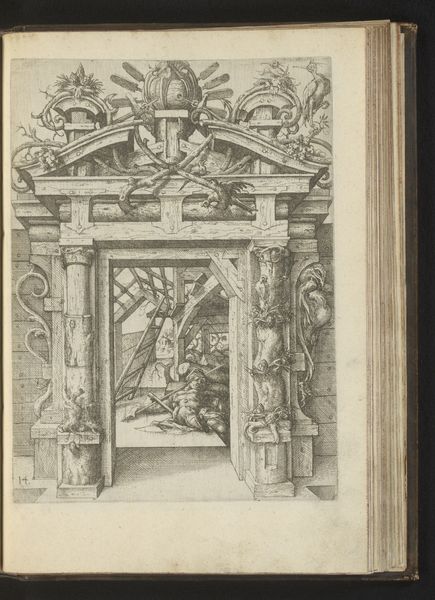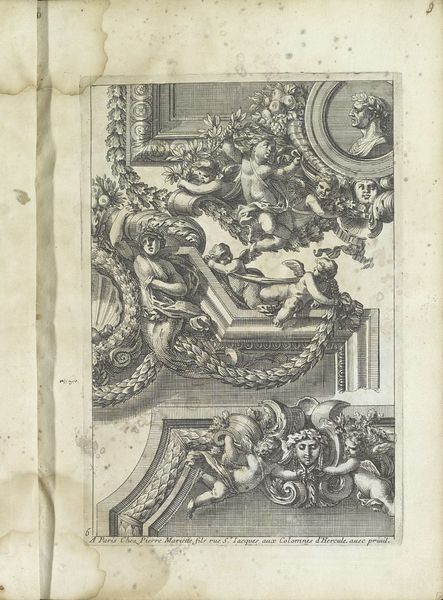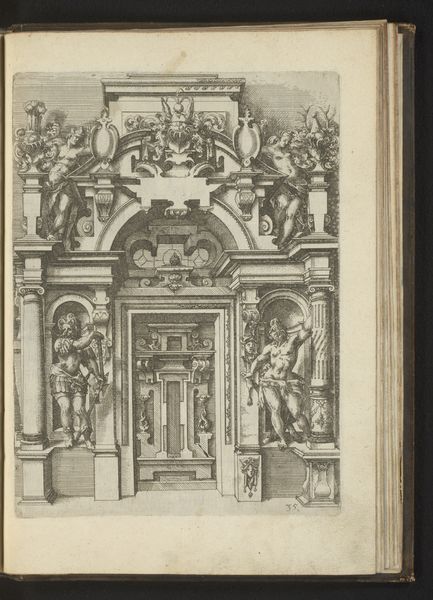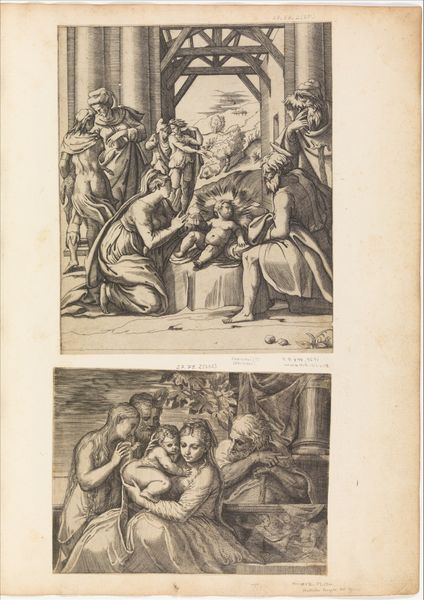
Wapenschild op een sokkel geflankeerd door twee soldaten en de personificatie van de Overwinning (Victoria), onderaan vastgebonden saters met tulbanden 1593 - 1595
0:00
0:00
drawing, print, paper, ink
#
drawing
#
toned paper
#
allegory
#
pen drawing
# print
#
pen sketch
#
sketch book
#
mannerism
#
figuration
#
paper
#
personal sketchbook
#
ink
#
pen-ink sketch
#
pen and pencil
#
pen work
#
sketchbook drawing
#
history-painting
#
sketchbook art
Dimensions: height 246 mm, width 186 mm
Copyright: Rijks Museum: Open Domain
Editor: This detailed pen and ink drawing, titled "Wapenschild op een sokkel geflankeerd door twee soldaten..." and created by Wendel Dietterlin around 1593-1595, is incredibly intricate. The detail in the soldiers' armor is astonishing, and the entire composition feels quite theatrical. What strikes you most about it? Curator: Considering Dietterlin's known association with mannerism, this piece immediately points to the societal investment in spectacle. It's not merely about depicting a coat of arms; it's about the performance of power. The very material, ink on paper, suggests the relative ease of dissemination through printmaking. How does the material consumption affect our reading? Editor: That's fascinating! So, the choice of printmaking enhances the message of power through wider circulation? Curator: Precisely! This also pushes us to consider the economics of image production. Who commissioned this? Who was meant to see it? The binding of this sketch to other studies creates another dimension of interpretation. What does it mean to look at these in series, almost like flipping through a personal sketchbook? Editor: I hadn't considered the economics behind it. The bound nature does suggest a personal element, almost like he was experimenting with ways to represent power. It’s like observing the artist wrestling with the visual language of authority. Curator: Absolutely. The artist's hand is clearly visible, making visible also the patronage and craft required to maintain dominance. Editor: That shifts my perspective entirely. I initially saw just a formal display, but understanding the material conditions behind it opens up a much deeper discussion about power and representation. Curator: And it challenges us to consider where those materials originated, the labour involved in their production, and the audience the artist was attempting to reach, rather than solely focusing on iconography. This offers another layer of interpretation, focusing on the processes. Editor: I see. Thanks, it has definitely given me more food for thought!
Comments
No comments
Be the first to comment and join the conversation on the ultimate creative platform.
